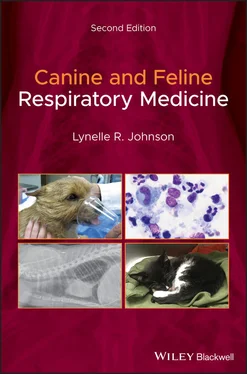Table 1.2 Respiratory causes of cough in dogs and cats.
|
Dog |
Cat |
| Infectious tracheobronchitis |
Canine infectious respiratory disease complex a |
Mycoplasma Bordetella |
| Pneumonia |
Bacterial Aspiration Foreign body Fungal Interstitial b |
Bacterial Aspiration Foreign body Fungal b Interstitial b |
| Inflammatory disease |
Chronic bronchitis Eosinophilic bronchopneumopathy |
Asthma/chronic bronchitis |
| Neoplasia |
Primary Metastatic |
Primary Metastatic |
| Structural disorders |
Bronchiectasis Airway collapse |
Bronchiectasis |
a Reported causes include canine adenovirus‐2, canine parainfluenza‐3 virus, canine respiratory coronavirus, canine herpesvirus, influenza viruses, and canine distemper virus along with Bordetella , Mycoplasma , and Streptococcus equi subsp. zooepidemicu s.
b More commonly a cause of tachypnea than cough.
Determining environmental and travel history is important for animals with cough. Exposure to a high‐density dog population should raise concern for disease associated with canine infectious respiratory disease complex. If the cough is harsh and dry, Bordetella should be considered, while a soft, chronic cough could be suggestive of canine influenza virus infection. Sporting dogs that develop an acute onset of cough or have a chronic, antibiotic‐responsive cough could have foreign body pneumonia. Fungal pneumonia should be suspected in animals with cough that have traveled to endemic regions. In those animals, cough is usually accompanied by tachypnea and systemic signs of illness. Finally, environmental history is important, because exposure to pollutants and airway irritants can exacerbate upper or lower airway diseases in both dogs and cats, although it remains unclear whether or not exposure to second‐hand smoke is an important factor in worsening cough in animals (Hawkins et al. 2010).
In general, younger animals might be more likely to develop infectious or foreign body pneumonias, while older animals develop bronchitis, neoplasia, airway collapse, and perhaps aspiration pneumonia. Dogs with eosinophilic or fungal pneumonia also tend to be young to middle‐aged. Asthma/bronchitis seems to affect cats of all ages, although perhaps the eosinophilic form is more common in younger animals. Cervical tracheal collapse might affect younger dogs, while older dogs get both tracheal collapse and bronchomalacia.
The breeds affected depend on the underlying case of cough. For example, an older Retriever‐type dog is likely to develop laryngeal paralysis and subsequent aspiration pneumonia, while aspiration in a brachycephalic breed often happens at a young age. Tracheal collapse affects toy and small breed dogs, while chronic bronchitis and bronchomalacia can affect any size breed of dog.
One of the more difficult challenges in assessing animals with respiratory disease is the development of good auscultation skills. Practice and patience are required because audible sounds are altered by age, body condition score, conformation, respiratory pattern, and the presence of disease. As mentioned earlier, careful examination should include the larynx and trachea, followed by auscultation of all lung fields. The anatomic origin for lung sounds has not been fully established; however, normal lung sounds are usually designated as bronchial, vesicular, or bronchovesicular. Bronchial sounds are loud and are heard best over the large airways near the hilus. Typically, they are louder and longer during expiration than inspiration and have a tubular character. Vesicular lung sounds are soft, heard best on inspiration, and can be detected over the periphery of the chest in normal animals. The sound resembles a breeze passing through leaves on a tree. Bronchovesicular sounds (a mixture of bronchial and vesicular qualities) are typically louder on inspiration than expiration.
Lung sounds in animals with airway or parenchymal disease are often increased in loudness or harshness, and harsh bronchovesicular sounds can be the only physical examination finding in animals with marked bronchopulmonary disease. Adventitious (abnormal) lung sounds (crackles and wheezes) are discontinuous noises and are not found as commonly as expected in respiratory patients, but should always be taken as an indicator of disease. Adventitious lung sounds can be enhanced by inducing a cough or a deep breath, or by exercising the patient. In normal animals, it is difficult to induce a cough by palpating the trachea; however, animals with airway or parenchymal disease usually have increased tracheal sensitivity due to activation of irritant receptors by infection or inflammation.
Crackles are thought to result from rapid opening of airways, but could also arise from equalization in pressure as air passes through fluid or mucus‐filled airways. They can be heard at any point during inspiration or expiration. Fine or soft crackles are suggestive of pulmonary edema, particularly if ausculted in the hilar region of a dog, whereas coarse crackles are more suggestive of airway or parenchymal disease. Dogs or cats with pulmonary fibrosis can display either fine or coarse crackles that are ausculted diffusely across the chest. Auscultation in dogs with airway collapse can reveal diffuse crackles because of the presence of concurrent bronchitis, or because of small airways that open and close during the phases of respiration. In the latter case, crackles are often present during both inspiration and expiration. A loud snapping sound over the hilar region at end expiration is suggestive of collapse of the intrathoracic trachea, carina, or mainstem bronchi. Wheezes result from air passing through airways narrowed by intraluminal mucus, extraluminal compression, or by collapse or constriction, and are usually heard on expiration.
Tachypnea is most often associated with parenchymal or pleural disease, although in the cat tachypnea can also be encountered with bronchial disease. Parenchymal diseases that lead to tachypnea are primarily pneumonia and pulmonary edema. Pneumonia (infectious, aspiration, fungal, or interstitial) can be acute or chronic and insidious in onset. Both pneumonia and pulmonary edema are typically associated with systemic signs of illness such as lethargy, anorexia, and weight loss.
Tachypnea due to pneumothorax is usually acute; however, pleural effusive disorders can result in either an acute presentation with respiratory distress or a more chronic development of signs due to slow accumulation of fluid. Usually, the degree of respiratory distress is associated with the rapidity of fluid or air accumulation rather than with the specific volume present. Cats seem to be particularly sensitive to addition of a final, critical volume of fluid that overcomes their ability to compensate.
Cervical and thoracic auscultation, as described for evaluation of animals with cough, is important for animals that present with tachypnea, because many diseases will result in both cough and tachypnea. In addition to listening for increased sounds, it is important to determine if there is an absence of lung sounds, which might indicate the presence of fluid or air in the pleural space.
A notable clinical sign associated with parenchymal or pleural disease is a rapid, shallow breathing pattern, although with pleural disease, exaggerated chest wall motion or hyperpnea can sometimes be present in conjunction with a rapid respiratory rate. In animals with severe respiratory distress, elbows are abducted and the neck is extended to facilitate movement of air into the alveoli. Parenchymal diseases are characterized by increased lung sounds or detection of adventitious sounds. When pleural effusion is present, lung sounds are ausculted in the dorsal fields only and muffled sounds are heard ventrally; heart sounds are also muffled. Pneumothorax leads to an absence of lung sounds dorsally due to compression by air, and lung sounds are present in the ventral fields only. In some cases, a line of demarcation can be ausculted between normal and abnormal lung sounds, indicating a fluid line or the boundaries of air accumulation.
Читать дальше












